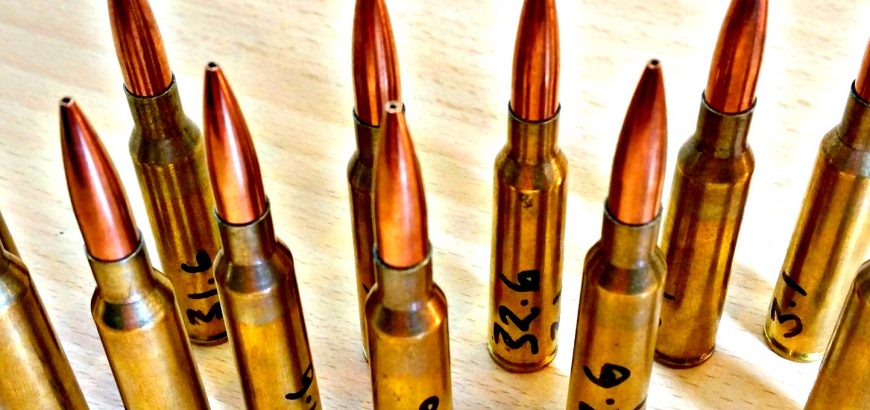Reloaders are a unique bunch. They represent the line that divides casual shooters and members of the shooting community. Anyone that does any great volume of shooting will reload. So will people interested in achieving the ultimate in accuracy for their particular firearm. Reloading is a unique skill that takes a while to learn, and there are lessons for those who are new to the game. The first one is – check your data.
Check your data before you purchase your components
If you’ve just bought your first reloading kit, dies, shell holders, etc, etc, you want to cracking into producing some highly accurate, super cheap rounds. Hold on. Before you run to your local gun store to buy the cheapest (or most expensive) projectile for your rifle, do some research.
The internet is a vast resource for reloaders. There are plenty of forums that are overflowing with useful data and personal reloading recipes. You’ll also find that most manufacturers will have some load data on their website, or will provide you some by email. This is an authoritative source of information that you can trust.
So, start your search with the forums. Find out what people are using in your particular type of firearm. Certain models, barrels and magazines will have preferences for different weights, seating depths and powders. Once you’ve got a general feel for what would suit your purposes (cheap as chips for plinking, best round for accuracy, great wounding for hunting, etc.), narrow it down to one bullet to start with.
If you’d like some good info on what kind of round is good for your rifle, check out the Knowledge Base at Nathan Foster’s Terminal Ballistics research website.
Check your data when you buy your components
Another great resource is your local gun shop owner or gunsmith. On my last trip the gun store I learned something about conflicting data that I had. I went in to purchase reloading components for my Husqvarna M38 Swedish Mauser. I was armed with reloading data from Sierra (I was purchasing 142 gr Sierra HPBT Matchkings) and data from the powder manufacturer. However, I wasn’t sure on the figures as the powder manufacturer stated a starting load close to the maximum load recommended by Sierra. They also had different seating depths/COALs.

My thought was that the powder manufacturer was trying to sell more powder at the expense of my brass and barrel, but in chatting to one of the sales guys at the local store, we quickly figured out that the powder manufacturer’s specifications were dangerously high for my rifle. The reason being, Sierra’s load was built up for a rifle of similar vintage to mine (the test rifle was Swedish Mauser M96), while the powder manufacturer’s data was figured off a brand new action with a custom built barrel. This made more sense as I realised the 0.050″ difference was to allow for the long throat of the Swede, while modern actions would be a bit tighter.
Whether these rifles were actually used to test these loads or it was done entirely withing a ballistics calculator and other software is unknown to me. Regardless, the same data for the same calibre and projectile came out completely different from two very authoritative sources. So, remember when reloading to always get as much information as possible at every step of the process.
And of course, reloading and shooting hand-loaded rounds comes with risk. Start at minimum loads and work your way up until optimum performance is achieved or pressure signs start to show. If your bolt is stiff on extraction or primers come out flattened or cratered, dial back on the powder a bit.





